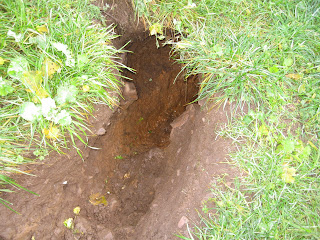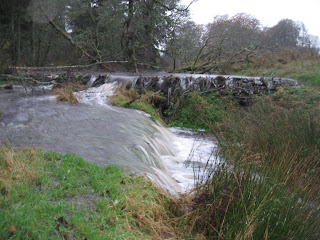While driving round the edge of the field that lies next to the Burnieshed burn, I noticed this hole. It is the landward entrance to a burrow, whose underwater entrance is somewhere in the bank of the stream.
At night the beavers come out of their burrow…
 They walk into the field along the paths that they have made and, at a certain point, stop to graze on the stubble turnips that were planted late in June to provide lambs with fodder on which to fatten before going for slaughter in December.
They walk into the field along the paths that they have made and, at a certain point, stop to graze on the stubble turnips that were planted late in June to provide lambs with fodder on which to fatten before going for slaughter in December.If you look carefully you can make out the branching of the paths.
From the point of view of a farmer the grazing of the stubble turnips is not very significant, but danger lies with the burrow that underlies the big hole that we saw in the earlier photos on this post. In spring a tractor, ploughing this field could fall into the burrow and be damaged expensively.
What is the answer?
Fill the hole with stones and so evict the beavers from their home?
Trap the beavers and translocate them?
Widen the riparian fringe to take into account the likely distance that beavers would burrow?




































